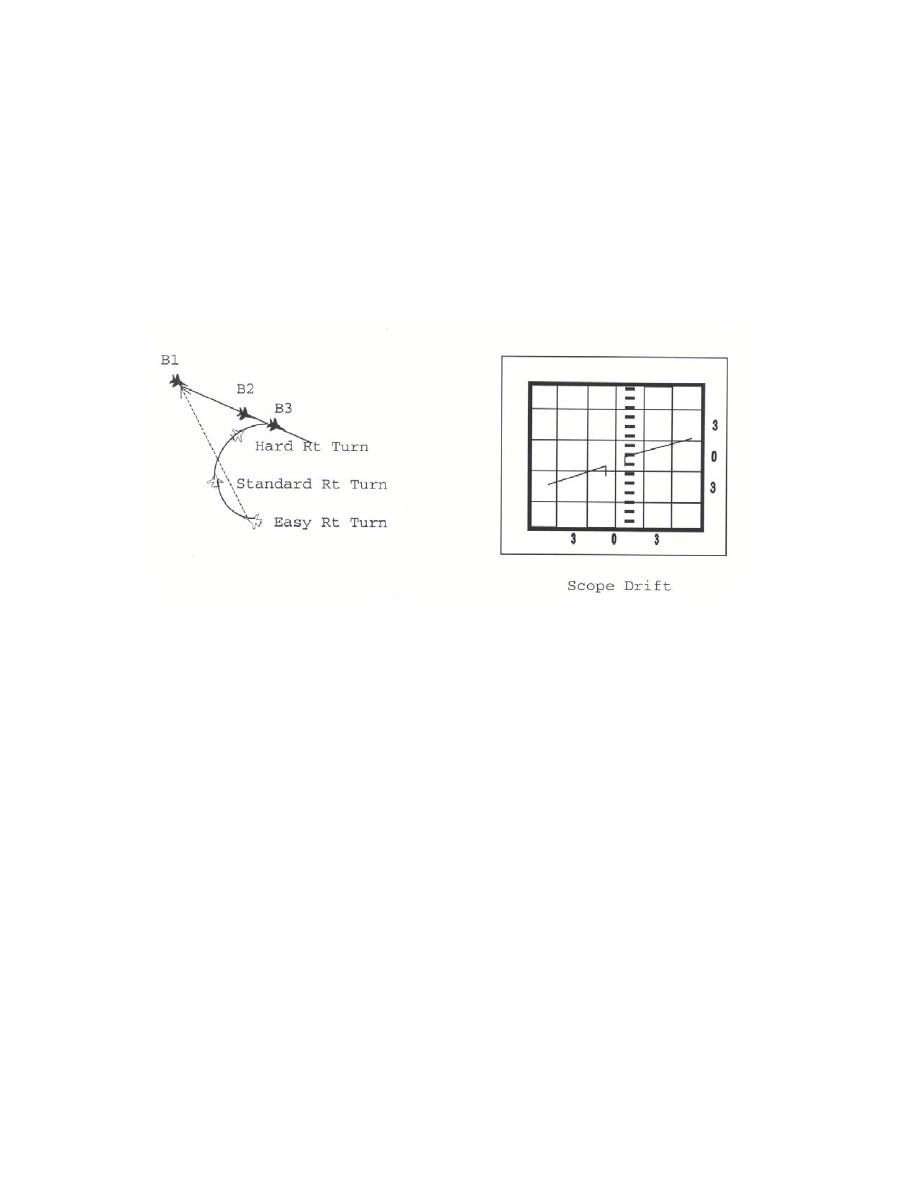 |
|||
|
|
|||
|
|
|||
| ||||||||||
|
|  INTERCEPT PROCEDURES TEXTBOOK
Analyzing the Drift
Certain factors must be considered when analyzing the drift in the counterturn.
(a)
Turn drift is countering the intercept drift
(b)
When scope drift = 0, then
fighter's turn rate = intercept drift rate
As an example, Figure 5 shows the fighter in a right turn, with AO at 10R. As long as the
fighter can keep the bogey at 10R AO, the turn drift is equal to the intercept drift.
Figure 5
Notice that as the slant range decreases, the amount of turn required to hold the bogey at the
same angle off increases. This is because, as slant range decreases, the number of degrees off
collision bearing increases. Therefore, the intercept drift rate will also increase, necessitating a
faster turn rate from the fighter.
Maximum Drift Rates
The aircrew can utilize this knowledge of intercept drift to predict when intercept drift will
be at a maximum. At this maximum point, the turn rate of the fighter must also be at a maximum
to counter this drift.
Since intercept drift is a function of degrees off CB, the maximum intercept drift will occur
when the bogey is the furthest away from CB. This happens at the pure beam position, which is
90DTG, or 90 Heading Crossing Angle, with the bogey on the nose. Figure 6 illustrates this
concept.
At 90 DTG, cut = 90 (cut = 180 - DTG)
CB = cut = 45
Bogey is 45 off CB at the beam
73
|
|
Privacy Statement - Press Release - Copyright Information. - Contact Us |